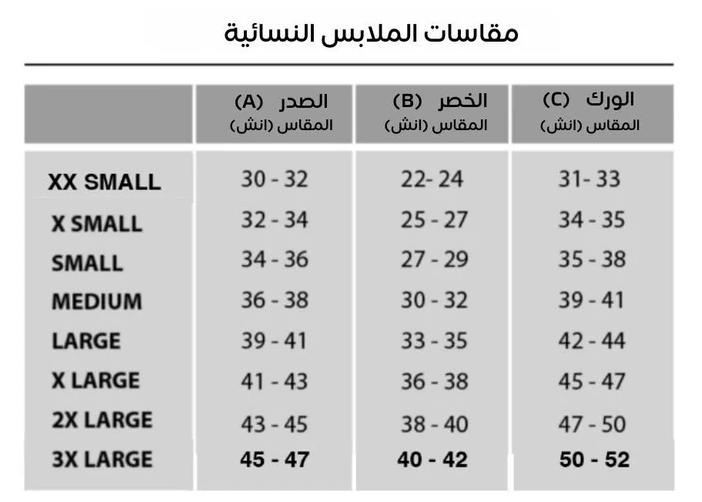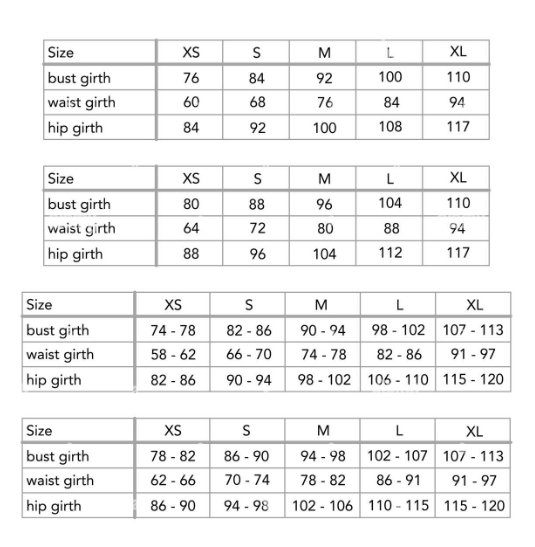
جدول مقاسات الملابس S M L XL بالوزن بالصور 2025
جدول قياسات الملابس حسب بالوزن والطول
كيف تختار المقاس المناسب عند الشراء أونلاين؟ دليل تفصيلي خطوة بخطوة مع جداول مقاسات للرجال، النساء، والأطفال مع توضيح مقاسات الملابس S M L Xl بالتفصيل.
كيف اعرف مقاسي من وزني وطولي
في الجدول السابق سيعطيك إشارة واضحة لاختيار مقاسك في الملابس بناء على الوزن أو الطول ولكننا سنوضح الطريقة أدناه للحصول على معلومة أدق لاختيار مقاسك في الملابس للشارء أونلاين.
كما نلفت إنتباهم بأنك يمكنك الشراء بسعر أقل من المتوقع عند استخدامك لأي كود خصم من منصتنا الآن التي تضم أكثر من 1000 كوبون فعال لأشهر الماركات والعلامات التجارية.
جدول مقاسات الملابس بالوزن
مرفق لكم جدول مقاسات الملابس بالوزن لمعرفة كم المقاس المناسب حسب وزنك:

١. لماذا معرفة المقاسات مهمة؟
عند التسوق عبر الإنترنت، يصعب تجربة الملابس قبل الشراء، مما يجعل اختيار المقاس المناسب تحديًا كبيرًا. تختلف المقاسات بين الماركات العالمية (مثل Zara، H&M، وغيرها)، وحتى داخل نفس الماركة قد تجدين اختلافات طفيفة. لذلك، فإن فهم كيفية قياس جسمك ومعرفة الجداول المقارنة بين الوزن، الطول، والمقاسات (S, M, L, XL) سيساعدك على تجنب الأخطاء واختيار الملابس التي تناسبك بشكل مثالي.
٢. الأدوات التي نحتاجها لمعرفة المقاس الصحيح
لأخذ المقاسات بدقة، ستحتاجين إلى:
- شريط قياس ناعم: متوفر في محلات الخياطة أو الأدوات المنزلية.
- خيط أو رباط حذاء: إذا لم يتوفر شريط القياس، يمكنك استخدام خيط ثم قياس طوله بمسطرة.
- مسطرة أو مقياس: لتحويل القياسات من الخيط إلى أرقام دقيقة.
اقرأ أيضاً: كود خصم نون Noon

٣. طريقة أخذ المقاسات الأساسية
لحساب مقاسك بدقة، اتبعي الخطوات التالية:
- محيط الصدر:
- قفي بشكل مستقيم وذراعيك مرفوعتان.
- لفّي شريط القياس حول أعلى منطقة في الصدر (تحت الإبطين مباشرة).
- تأكدي من أن الشريط موازٍ للأرض وليس مشدودًا أكثر من اللازم.
- محيط الخصر:
- حددي أصغر منطقة في الخصر (عادة فوق السرة بـ 2-3 سم).
- لفّي الشريط حول هذه المنطقة دون حبس أنفاسك للحصول على قياس دقيق.
- محيط الفخذين:
- قفي بشكل مستقيم وقدميك متباعدتان قليلًا.
- لفّي الشريط حول أوسع جزء من الفخذين (أسفل عظام الحوض).
- تأكدي من أن الشريط ليس مشدودًا أكثر من اللازم.
اقرأ أيضاً: كيفية تحويل المقاسات الأمريكية ب 3 خطوات
٤. جدول مقاسات النساء (S, M, L, XL) و مقاسات الملابس النسائية
| المقاس | الوزن (كجم) | الطول (سم) | محيط الصدر (سم) | محيط الخصر (سم) |
|---|---|---|---|---|
| S | 50-57 | 155-165 | 86-89 | 66-72 |
| M | 54-64 | 165-175 | 90-96 | 74-80 |
| L | 64-75 | 173-185 | 97-99 | 82-88 |
| XL | 75+ | 185+ | 102-104 | 90-96 |
ملاحظة: إذا كنتِ بين مقاسين، اختاري الأكبر لضمان الراحة.


لابد تشيك على كوبون متجرك المفضل من هنا
٥. جدول مقاسات الملابس S M L Xl للرجال
| المقاس | الوزن (كجم) | الطول (سم) | محيط الصدر (سم) | محيط الخصر (سم) |
|---|---|---|---|---|
| S | 63-73 | 165-175 | 92 | 72 |
| M | 70-80 | 173-185 | 96-102 | 76-82 |
| L | 85-97 | 185-195 | 106 | 86-92 |
| XL | 94-110 | 190-205 | 112-117 | 96-102 |

٦. جدول مقاسات الأطفال (حسب العمر)
| العمر (سنوات) | الطول (سم) | الوزن (كجم) |
|---|---|---|
| 4 | 102-108 | 16-18 |
| 5 | 108-114 | 18-20 |
| 6 | 114-122 | 20-22 |
| 7 | 122-124 | 22-24 |
| 8 | 124-130 | 24-27 |
| 9 | 130-137 | 27-32 |
| 10 | 137-142 | 32-40 |

٧. نصائح لقياس الملابس بدقة
- البنطلونات:
- قِيسي طول الساق من الخصر إلى الكعب.
- قِيسي محيط الخصر واطرحي 4 بوصات للدقة.


- القمصان:
- قِيسي طول الياقة (من الزر الأول إلى الأخير).
- قِيسي طول الكم من الكتف إلى الرسغ.
اقرأ أيضاً : كود خصم ترينديول Trendyol 2025
٨. فروقات بين الماركات
| الماركة | ملاحظات |
|---|---|
| نمشي | توفِّر جدول مقاسات خاص على موقعها. |
| ستايلي | تقدم دليل قياسات مفصّل لكل منتج. |
٩. كوبونات خصم للمتاجر الشهيرة
- نمشي: كود خصم 35٪ (استخدمه عند الدفع).
- ستايلي: كود خصم 90 ريال سعودي لأول طلب.
- ترينديول: كود خصم 20٪ لعام 2025.
- متجر 6 ستريت – خصم حتى 85% مع كود ACC
الكود: استخدم ACC للحصول على خصم يصل إلى 85%. - متجر ليفيل شوز – خصم 30% مع كود BK31
الكود: ادخل BK31 لخصم 30% على جميع المنتجات. - متجر أندر آرمر – خصم 50% مع كود DY49
الكود: وفر 50% باستخدام كود DY49. - متجر نيو بالانس – خصم 55% مع كود HU96
الكود: خصم 55% مع كود HU96. - متجر أديداس – خصم 30% مع كود RAN162
الكود: استخدم RAN162 لخصم 30%. - متجر الشمس والرمال – خصم حصري مع كود LKP86
الكود: فعّل الخصم عبر كود LKP86. - متجر كروكس – خصم حصري مع كود ACC
الكود: وفر مع كود ACC.
١٠. أسئلة شائعة حول المقاسات
- كيف أعرف مقاسي في البنطلون؟
- قِيسي محيط الخصر والورك، واختاري المقاس الأقرب من جدول المتجر.
- هل يتغير المقاس مع العمر؟
- نعم، خاصة للأطفال (يُنصح تحديث القياسات كل 6 أشهر).
١١. لاتنسى الكوبون عند الشراء اونلاين
- استخدمي دائمًا جداول القياس الخاصة بالماركة قبل الشراء.
- إذا كنتِ بين مقاسين، اختاري الأكبر (خاصة للملابس الضيقة).
- لاتنسى استخدام كوبون الخصم من كل الكوبونات
باستخدام هذا الدليل، يمكنك تجنب الأخطاء الشائعة واختيار الملابس المناسبة بسهولة.
